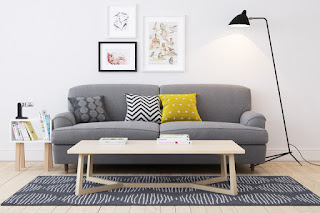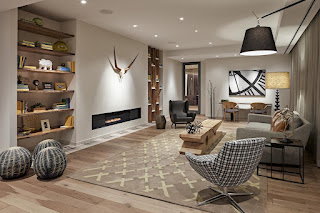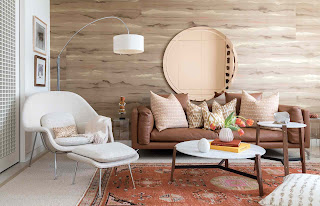UPGRADE YOUR LIVING ROOM LIGHTS!

Best Shape And Size Of Pots for Plants
September 6, 2021
Awesome Small Pond Waterfall Ideas!
September 8, 2021UPGRADE YOUR LIVING ROOM LIGHTS!
- Accent Lighting in the living room
- ambient lighting
- Average-sized living room design ideas
- bright light next to a chair
- Different types of lights
- Lighting
- Lighting essentials
- living room design tips
- living room lighting
- task lighting and lamps
- Task Lighting in the living room
- task lighting or accent lighting
- UPGRADE YOUR LIVING ROOM LIGHTS
- Wow everyone with accent lights as finishing touches
Tired of not being able to see what you’re doing? Old out-dated light fixtures which look ancient or plain ugly? You’ve got some lighting but it’s still not bright enough to read a book? Or your rooms just don’t have enough lighting fixtures built-in?
You shouldn’t have to suffer in the dark!
It’s time to shed light on your situation with these powerful living room design tips.
Ask yourself, what do you want your living room lighting to do?
When deciding how to decorate a living room with better lighting, there are different types of living room light fixtures and lamps designed for different purposes.
Throwing in some living room lighting fixtures might not be the best idea if you need bright light next to a chair. Or a couple of living room lamps may not be enough ambient light to fill a family room for your next Super Bowl party. You might even just have the wrong type of lamp shades attached for your needs.
Think about what each area of the living room needs
Try breaking down the room into functional areas.
Ask yourself, where do you need the most light?
Does it need to be bright and focused or a background ambient light?
Lighting the whole living room in general raises overall ambient light
A brighter light near to where you perform activities helps you read and focus
Adding decorative accent lamps highlights your living room decor and furniture
Living Room Lighting
Match the most appropriate type of lighting to the kind of light you need
Modern living room lighting design can feature either ambient lighting, task lighting or accent lighting.
These different kinds of light placement and “concentration” are mainly to do with how focused or localized the light is – is it spread out (diffused) through the room reflecting off surfaces, or is there more direct focused light close to a person performing an activity.
Did you know there are different forms of lighting?
Different types of light fixtures and lamps attempt to solve one problem:. “How do I position light at the correct horizontal and vertical position in a room to serve a purpose?”
This is usually accomplished through different forms or shapes of light. The physical design of the fixture or lamp itself makes use of one of three possibilities:
1. Ceiling lights, for example hanging from a chain making use of gravity, or attached close to the ceiling itself
2. Floor lights, attempting to overcome gravity, for example with a floor-standing lamp or an accent up-light
3. Table lights, placing light in the mid-level of the room by sitting the light source on top of embedded into some other furniture, such as with a table lamp, desk lamp, or low hanging pendant light
Different types of lights
Types of lights may spread the light out in different ways depending on the design. For example a table lamp typically reflects some light out the top and bottom of the shade spreading it out more below, whereas a chandelier may radiate light in all directions.
Living room lighting ideas
We’ll begin with a brief overview of each of the main types of lighting and their intended use.
What is Ambient Lighting?
Ambient light is general diffused background light which fills the room and raises the overall light throughout the room. Ambient light fills the room but may not be sufficient for specific activities like reading in a chair. Most ambient light is usually provided by living room lighting fixtures.
Types of light fixtures producing ambient light for your living room include:
Chandeliers hanging from the ceiling
Pendant lights hanging from the ceiling
Wall sconces at the sides of the room
Flush or close-to-ceiling light fixtures over-head
Recessed lights across the ceiling
A living room ceiling fan with a “light kit” attached
Ambient Lighting in the Living Room
What is Task Lighting?
Task lights shine bright light on specific tasks and allow you to highlight a more specific area – next to a chair, over a table, in a cozy corner, etc. These living room lamp ideas help you to perform tasks where you need brighter light to see.
Types of lights for more specific living room activities include:
Table lamps next to a chair or sofa or in the corners of the room
Reading lamps next to a chair or couch
Desk lamps on a desk where you might handle paperwork
Task lamps designed for hobbies and crafts
Full spectrum lamps which are excellent next to a chair for reading or crafts
Some smaller pendants and swag lights positioned over a seating area
Swing-arm lamps and wall lights which can extend out close to a chair or table
Piano lamps or banker’s lamps which provide focused downward light over a piano or keyboard
What is Accent Lighting?
Accent lights are more for decoration and add subtle touches to a living room’s lighting. They show off certain features in the room and add a soft local glow in specific areas.
Types of lighting for accenting your living room decor include:
Accent lamps, novelty lamps and decorative tiffany lamps
Up-lights or can lights positioned near the floor shining upwards
Spot lights and picture lights for highlighting artwork and other living room decorations
Finer details to pay attention to when choosing lighting
Some things may seem more obvious. Just putting “a light” somewhere in the room will certainly help. But sometimes you may not get the results you expected.
Here are some living room lighting tips to keep in mind:
The number of light bulbs and the amount of light they output (measured in watts or, more accurately, lumens)
The distance from the light bulb to significant objects, surfaces or people (influences how much light reaches the subject)
The lightness or reflectivity of objects and surfaces (darker surfaces absorb light, lighter walls make better use of your light fixtures)
The type of light bulbs and the color temperature (lower Kelvin “temperature” are more yellow, higher are more white or blue)
How shielded the light bulbs are by a shade or cover – these will either block or diffuse the light
The “shape” of the light output by the light fixture or lamp, ie what kind of directions the light radiates – is it upwards, downwards, sideways, all directions? This is in large part dictated by the style of lamp shades used.
The amount of sunlight entering the room – can you remove furniture or other items which block the natural daylight, and is there enough lighting at night when there is no sunlight?
What kind of reflections, lit areas or shadows the light might produce, for example on walls and ceilings, and can you use this as a deliberate interior design feature?
The coloration of the shade covering the light bulb – this will influence and filter the light output, “coloring” the whole room with a tint. For a full range of color representation you’ll want some white or full spectrum lights that are “unfiltered” by the light shade itself.
Beware of light fixtures with not enough wattage or brightness. Some decorative fixtures might be designed more for looks (e.g. use of low-wattage decorative vintage bulbs) rather than to significantly light the room, unless that’s what you want
Living room lighting fixtures bring outstanding benefits to your living room or family room
Your modern living room lighting will be well served by adding appropriate lighting fixtures or lamps. Each type of light brings with it tremendous benefits for the whole family.
The many benefits of ambient lighting in your living room
ambient lighting benefits
Background lighting is especially useful when the weather is darker or at night and light from other lamps is just not enough
Ambient lights instantly illuminate the whole living room and can be switched off when you want gentler light from individual lamps
Ambient light fixtures can be attached to a dimmer switch to make them dimmable and set the mood – even LED light fixtures are now dimmable
When you first enter a room and need to get your bearings, switching on a bright room light is the best choice without having to enter the room further to access a lamp switch
For those times when you are doing something out of the ordinary – cleaning or hunting for the TV remote, living room light fixtures can be very useful for highlighting every area at once
With multiple people in a room together for a family reunion or time to eat casual dinner in front of the TV, lights for living room ceilings may be the best option
Highly practical benefits of adding task lights and lamps
task lighting and lamps
You are not always using the whole room, so why light areas of the room that aren’t serving your current functions?
General ambient light may not be bright enough for specific tasks such as reading a book in your favorite chair, reducing glare while you connect with your friends on your mobile device, or for crafts and hobbies
The closer you are to the source of the light the brighter the light will appear to be
You’ll spend most of your time sitting in specific areas of the living room rather than moving about. Whether browsing a photo album with visiting relatives or lounging in front of the best shows on TV, you’ll want the light to be where YOU are
Most task lamps are portable forms of lighting – they can easily be moved or manipulated to adjust the direction and focus and brightness of the light
Table lamps and floor lamps are excellent ways to put the light exactly where you need it when you’re settling in to spend some time focusing on living room activities
When you just want a lower level of light, switching on some lamps may suffice to set the mood and create a relaxed atmosphere
Wow everyone with accent lights as finishing touches
accent lamps in the living room
It’s not always about functional lighting. A living room space is also a place of comfort, featuring collections of your favorite decor and works of art
Sometimes specific lamps or overhead lights may not reach certain parts of the room especially at the walls. A mantel, fireplace or side table might need a little accent lamp to help highlight the area
Accent lamps are highly decorative art pieces in themselves, so serve a double purpose of decorating the room and establishing your living room themes, as well as providing an extra touch of light in the room
Tiffany lamps make excellent gifts as well as beautiful ways to use your lighting in a decorative way, shining light through colored pieces of glass designed to attract the eye and finish the room
Small lights in small areas like up-lights or can lights can shine lights onto walls and surfaces to break up large areas of monotonous color or to soften the look of hard surfaces
Subtler touches in your living room decor adds to the overall atmosphere and mood of the room – beauty is often in the little details
Living room design ideas to create beautiful and functional living rooms
Every living room should feature a combination of at least ambient lighting and focused task lighting. Accent lighting is an optional extra touch.
Lighting essentials
At least one or more light fixture, preferably a living room ceiling light which can spread light throughout the room
At least 1 or more lamp – living room floor lamps are popular for spreading brighter light in a more diffused way, while living room table lamps are popular for bringing the light closer to your eyes
A living room lighting apartment solution
If you live in an apartment or some room where you cannot install light fixtures, or you don’t want to make a permanent modification, a combination of swag pendant lights or plug-in wall lights and some portable lamps will work wonders. This is also a great way to save money by avoiding the need for an electrician.
Average-sized living room design ideas
living room ceiling fan with lights
If you have high ceilings you may have room for a living room chandelier or pendant. These will hang down so you’ll need several feet of additional height to walk beneath them. But they can add beautiful thematic lighting to your room.
If you don’t have the head-room, opt for a semi-flush close-to-ceiling light. These have a more decorative design and are not as boring or ugly as basic dome lights.
A pair of wall lights on a major wall, such as behind a couch, can offer additional brightness when you need it. Seating is usually placed away from the center of the room so it helps to bring extra light close to where you’ll spend time.
Wall lights can also illuminate over your shoulder for reading. Alternatively place them opposite the couch, typically behind the television.
Complete the balance of light by arranging a pair of table lamps, either at the sides of the couch on end tables, or in the opposite corners of the room. The lamp shades will shield your eyes while remaining in your field of vision.
Placing lamps on the same side as the TV gives you the option of lighting that area or switching the lamps off while you watch the screen. It can sometimes help reduce glare from the TV by having other lights nearby.








